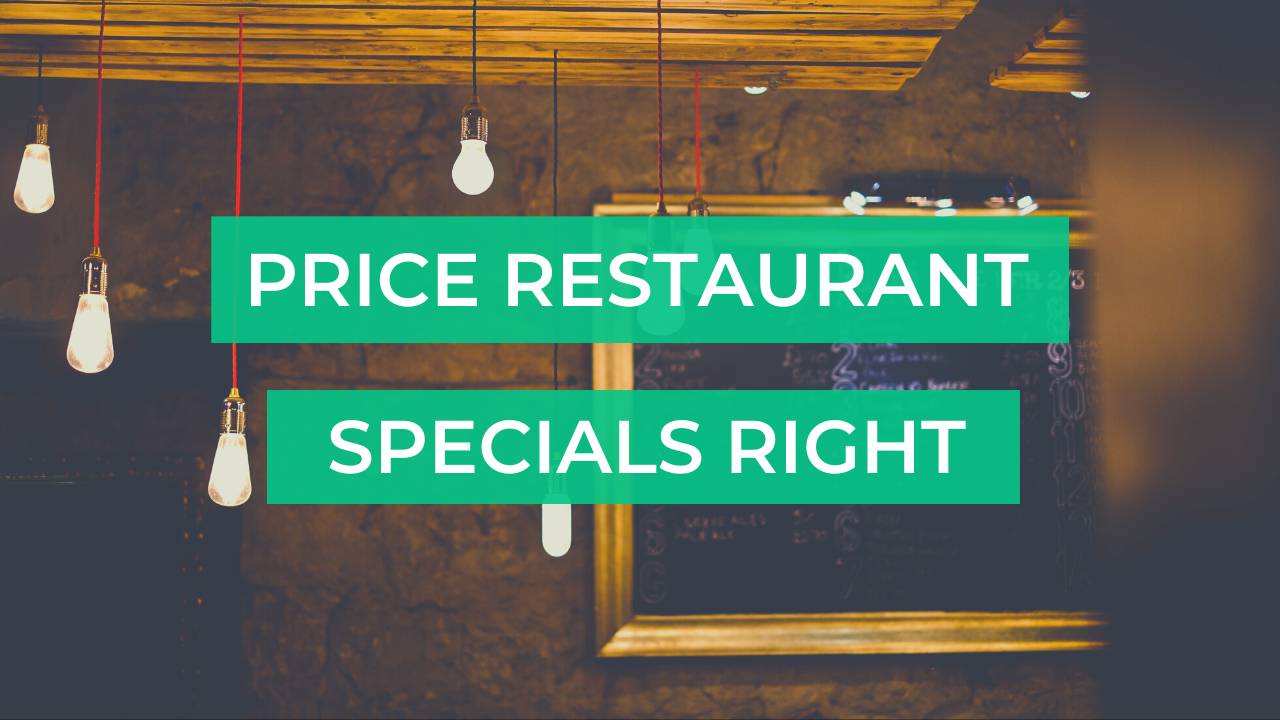How to Price Restaurant Specials

If you’ve ever wondered how to set prices for restaurant specials, I want to teach the science behind it. Watch this video, or keep scrolling, for three things to know when pricing your specials.
Let's get right into how to sell and price restaurant specials. Let me paint you a picture of what typically happens in most restaurants. Chef makes this wonderful feature, puts it in the pass so that the servers can have it during pre-shift lineup. Sally, the server with great chalkboard writing, writes fettuccine Alfredo on the board, and says, “Chef, how much do I charge?” Chef looks in the pass, looks at that fettuccine Alfredo, right? Scratching her head, thinking. And then, right out of the rear end, says $13.95.
Are you kidding me, right? You are going to price something on the fly and you wonder why you're not making the money you deserve. You’re supposed to make more money on special features because they are special. They're not something on the menu on a day-to-day basis. But also how do you know if you're making money if you're just eye balling.
The truth of matter is you can't. We are not an industry of dollars; we are an industry of pennies. I don't want to hear from your chef or your kitchen manager that they generally know what the protein costs, or generally know what the side is. If you generally think you know things, then you generally ain't making money.
If you truly want to know what you should price something, it starts with an accurate up-to-date recipe costing card. You have to know every ounce, every penny that goes into each dish.
And then for the pricing part, this is where the science comes in. What I hate about TV is that we've got all these shows of these experts, out there turning around restaurants, and they spout out things like your recipes should be at a three-time markup. Who the hell said that?
You’re going to have items like an appetizer frozen out of a box that has a 38 percent food cost because you sell the living hell out of it and then hand-cut French fries at a 5 percent cost of goods sold.
Here is the restaurant industry standard of menu. Let's say you have a restaurant with two menu items and that's all you have. One is a 1 percent food cost. One is 99 percent food cost. In a calendar month you sell 100 items. You sell 100 items, but 99 at 1 percent food cost and 1 at 1 percent. What's your food cost? It’s 1 percent. Next month, same menu, you sell 99 menu items at 99 percent and 1 at 1 percent. What's your food cost? It’s 99 percent.
See, it matters how much you sell of each one. It's a nasty mathematical term called a weighted average. The only way to truly know what your food cost should be in your restaurant is based on what your customers actually purchase and accurate up-to-date recipe costing cards.
Now, if we know that and then we know what our target food cost is, when you put feature items out, are you shooting for something called cash contribution or low food cost?
Think about this. A steakhouse can often sell a steak at a 40 percent food cost and still make money. Why? Because they've charged $40 for the steak at 50 percent. Easy math, they make $20. There's $20 in cost. Cost minus sale price is$20.
Well if I sell a burger at $12 and it's got a 30 percent food cost, does it make you $20. No. The truth of the matter is when you look at it, you have to understand your budget because of labor cost.
Here’s what I mean. If you've got a burger that needs flipping, and you have a $15/hour cook, and I make call it $8, but I have the same $15/hour cook. Flip the steak that makes me $20, do you need two cooks to flip it? No, you still only need one. While the cost is high, because the ring at the register is high, it lowers your labor cost. That’s why you truly have to understand where you're trying to hit based on your budget. Where is your target food cost supposed to be and are you going after cash contribution or lower food cost? And in doing so, in most features, they should be better cash contribution and lower food cost.
The bottom line is if you truly want to price your specials right, you've got to have accurate up-to-date recipe costing cards, and know the target cost of goods sold you’re shooting for in food cost, then price accordingly.
Follow these steps to magically make the money you deserve.
I cover systems like this and more in my book? Order your copy of Restaurant Prosperity Formula: What Successful Restaurateurs Do here.
If you would like to learn more about the importance of systems and how to run a restaurant, read our free special report, Is Your Food Distributor Screwing You? 5 Things You Can Do Now to Lower Food Cost. Download it here. Be sure to visit my YouTube channel for more helpful restaurant management video tips.




